Making space for wildflowers and pollinators
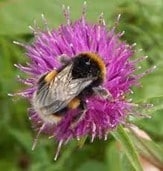
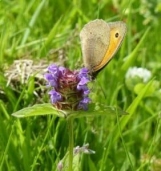 Over the last 75 years 97% of Pennine wildflower meadows have been lost to development and changes in farming practice, consequently insect and pollinator populations have declined dramatically too.
Over the last 75 years 97% of Pennine wildflower meadows have been lost to development and changes in farming practice, consequently insect and pollinator populations have declined dramatically too.
By changing the way recreational greenspaces and roadside verges are managed valuable habitat can be created for wildflowers, bees, butterflies and other pollinators. Short mown or grazed grass has limited value.
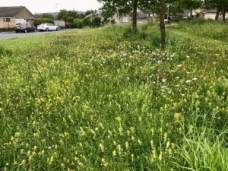 Addingham Environment Group started conversations with landowners around the village to find areas to manage to increase wildflower and pollinator populations. By 2019 we had seven sites in development. This has now grown to ten. With support from the Yorkshire Dales Millennium Trust BeeTogether Project new wildflower mini-meadows were sown and planted in 2022 at Addingham Primary School and at Craven Crescent Green. In Spring 2023, a small verge on Bark Lane, Ferryman’s Green, was added to the list. An article about our work was published in the Yorkshire Dales Society Review here, and an end of season report for 2024 can be seen here.
Addingham Environment Group started conversations with landowners around the village to find areas to manage to increase wildflower and pollinator populations. By 2019 we had seven sites in development. This has now grown to ten. With support from the Yorkshire Dales Millennium Trust BeeTogether Project new wildflower mini-meadows were sown and planted in 2022 at Addingham Primary School and at Craven Crescent Green. In Spring 2023, a small verge on Bark Lane, Ferryman’s Green, was added to the list. An article about our work was published in the Yorkshire Dales Society Review here, and an end of season report for 2024 can be seen here.
The 10 locations are shown on the map below.
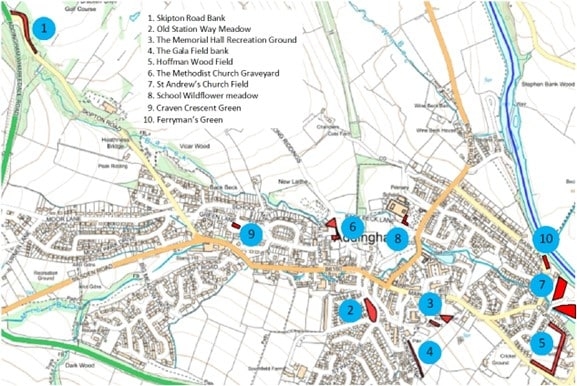

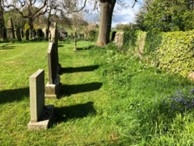 The Parish Council, Bradford Council Parks & Countryside, InCommunities, Addingham Primary School and the Churches involved now leave the grass to grow over the summer in these areas, so wildflowers can set seed, and insects, birds and mammals can enjoy the habitat.
The Parish Council, Bradford Council Parks & Countryside, InCommunities, Addingham Primary School and the Churches involved now leave the grass to grow over the summer in these areas, so wildflowers can set seed, and insects, birds and mammals can enjoy the habitat.
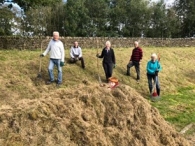
 Where necessary Environment Group volunteers help with raking off the grass after a late summer/early autumn cut. Taking off the cuttings helps wildflowers to thrive as they do best in low nutrient conditions.
Where necessary Environment Group volunteers help with raking off the grass after a late summer/early autumn cut. Taking off the cuttings helps wildflowers to thrive as they do best in low nutrient conditions.
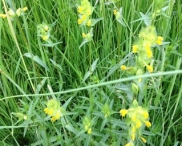

To help the conversion to flower rich habitat we have sown Yellow Rattle seed. This plant helps to suppress dominant grasses. We also have a team growing wildflower plug plants at home to plant out.
Patience is needed, but our wildflower margins and pollinator patches are gradually becoming more colourful and diverse.
Thanks to a grant from Addingham Beer Festival, we have purchased two light-weight Austrian scythes to help with the management of our wildflower areas. Managing grassland with a scythe is a low tech, low carbon activity ideally suited to developing and restoring wildflower habitats.

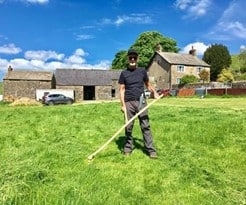 AEG volunteer, Peter Miller attended a training day to learn how to use them and is now passing on his knowledge to other members of the group. Here Peter describes his experience:
AEG volunteer, Peter Miller attended a training day to learn how to use them and is now passing on his knowledge to other members of the group. Here Peter describes his experience:
‘Friday, 4th June 2021 was an excellent day! It was beautiful weather and I was deep in the Forest of Bowland countryside at Belle Sykes Farm, Slaidburn, a Site of Special Scientific Interest, which has some of the last unimproved flower-rich grasslands in the region. I was there to learn to scythe, on a course run by an expert, Steve Tomlin. We covered all the skills needed to use and maintain the scythe. I had previously a little experience but soon realised that I had been doing much that was wrong. Scything should be a gentle activity, almost effortless. At the end of the day I was tired but not completely exhausted. Perhaps, I was improving?! ‘

